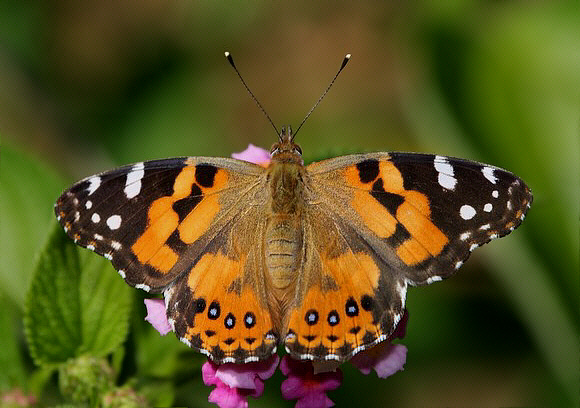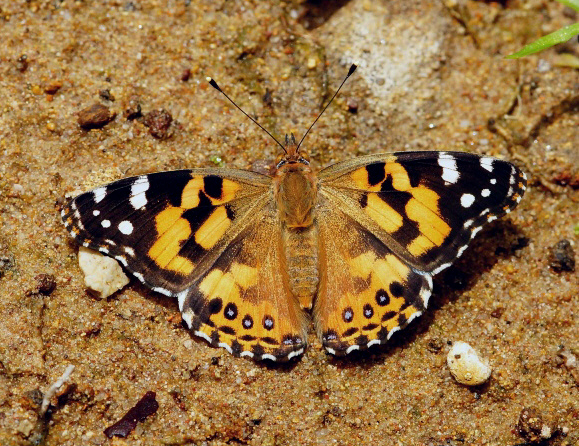
Introduction
The genus Vanessa comprises of about 20 species worldwide. The genus is divided into 2 groups – the Painted Ladies and the Red Admirals.
There are 3 Vanessa species found in Australia: the Yellow Admiral itea, the Painted Lady cardui and the Australian Painted Lady kershawi. In New Zealand there are two species: itea and the endemic New Zealand Red Admiral gonerilla.
All Painted Lady species have a similar pattern of pinkish-orange, black and white on the upperside, and have cryptic undersides marbled in olive and grey, with a row of post-median ocelli of varying sizes on the hindwings.
The Australian Painted Lady Vanessa kershawi can easily be mistaken for its cosmopolitan relative Vanessa cardui. In kershawi however 3 of the ocelli on the hindwings have prominent blue centres, and the hindwings also have a blackish apex that in confluent with the 4th ( upper ) ocellus.
Vanessa kershawi is found throughout most of Australia. It occurs as a regular breeding migrant in lowland areas of New Zealand but does not survive winters there.

Habitats
Like most Vanessa species kershawi is strongly migratory in behaviour and can consequently be found in almost any habitat. During spring the butterflies migrate south in large numbers from the northern states to the south. In 1889 the migration was so large that trains were unable to generate enough traction due to the vast number of butterflies crushed while resting on the tracks.
Lifecycle
The egg is laid singly on the underside of a leaf of the foodplant. The caterpillar when fully grown is greyish-green with paler stripes along the back and sides. It is adorned with dorsal, lateral and sub-lateral branched spikes. It lives within a silken web, which it expands as it develops. The foodplants include Cryptostemma, Gnaphalium, Helichrysum and less often other genera of Asteraceae. The chrysalis is formed inside a large loosely webbed silk shelter. It is pale brown or reddish brown with dark markings and is spangled with small silver or gold spots.
Adult behaviour
The adults assemble on hilltops where courtship and copulation take place. On plains they assemble at the top of trees. Both sexes have an extremely rapid and direct flight. They usually remain at the emergence site for a day or two before dispersing or migrating.

